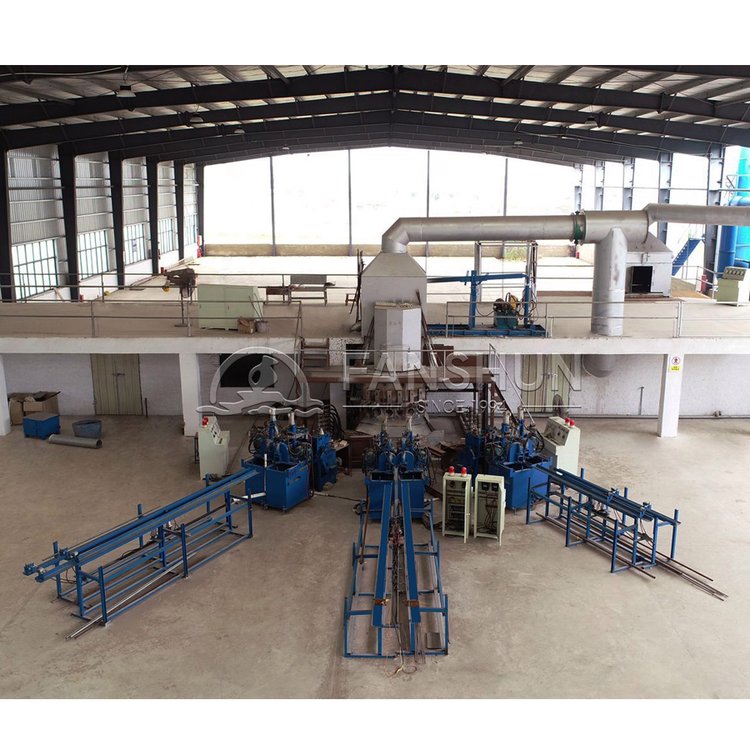How Efficient Are Modern Aluminum Rod Production Lines?
The aluminum industry has seen significant advancements in recent years, particularly in the development of aluminum rod production lines. These modern systems, including the Aluminum Rod Continuous Casting and Rolling Line, have revolutionized the way aluminum rods are manufactured, offering unparalleled efficiency, precision, and sustainability. As industries worldwide demand higher-quality materials and more sustainable practices, the role of advanced Aluminum Rod Manufacturing Equipment has become increasingly critical.
The Evolution of Aluminum Rod Production
Traditional methods of producing aluminum rods were often labor-intensive and time-consuming. However, with the introduction of modern aluminum rod production lines, the process has become faster, more efficient, and environmentally friendly. The Aluminum Rod Continuous Casting and Rolling Line, for instance, integrates casting and rolling into a single seamless process, significantly reducing production time and energy consumption. This innovation has set a new standard in the industry, making it possible to produce high-quality aluminum rods at a fraction of the cost.
Key Components of Modern Production Lines
A typical aluminum rod production line consists of several key components, each playing a vital role in ensuring efficiency and quality. The Aluminum Rod Manufacturing Equipment used in these lines includes melting furnaces, casting machines, rolling mills, and cooling systems. These components work together to transform raw aluminum into perfectly shaped rods.
The Aluminum Rod Forming Line is another critical part of the process. This stage involves shaping the aluminum into rods of specific diameters and lengths. Modern forming lines are highly automated, ensuring consistent quality and reducing the risk of human error. Similarly, the Aluminum Rod Casting Line is responsible for creating the initial aluminum billets, which are then processed further in the production line.
Efficiency and Sustainability
One of the most significant advantages of modern aluminum rod production lines is their efficiency. The integration of advanced technologies, such as the Aluminum Rod Continuous Casting and Rolling Line, has drastically reduced production times. What once took hours can now be accomplished in minutes, thanks to automated systems and real-time monitoring.
Sustainability is another area where these production lines excel. Modern Aluminum Rod Manufacturing Equipment is designed to minimize waste and energy consumption. For example, the Aluminum Rod Casting Line uses recycled aluminum, reducing the need for raw materials and lowering the carbon footprint of the production process. Additionally, the Aluminum Rod Forming Line incorporates energy-efficient motors and cooling systems, further enhancing the environmental benefits.
Applications and Industry Impact
The efficiency of modern aluminum rod production lines has had a profound impact on various industries. From construction and automotive to aerospace and electronics, high-quality aluminum rods are in high demand. The Aluminum Rod Continuous Casting and Rolling Line has made it possible to meet this demand without compromising on quality or sustainability.
In the automotive industry, for instance, aluminum rods are used to manufacture lightweight components that improve fuel efficiency. The precision offered by modern Aluminum Rod Manufacturing Equipment ensures that these components meet strict industry standards. Similarly, in the construction sector, the durability and versatility of aluminum rods make them an ideal choice for structural applications.
Challenges and Future Prospects
Despite their many advantages, modern aluminum rod production lines are not without challenges. The initial investment in Aluminum Rod Manufacturing Equipment can be substantial, making it difficult for smaller manufacturers to adopt these technologies. Additionally, the complexity of systems like the Aluminum Rod Continuous Casting and Rolling Line requires skilled operators and regular maintenance.
However, the future looks promising. Advances in automation and artificial intelligence are expected to further enhance the efficiency of aluminum rod production lines. For example, predictive maintenance technologies can help reduce downtime, while AI-driven quality control systems can ensure even higher levels of precision. The Aluminum Rod Forming Line and Aluminum Rod Casting Line are also likely to see improvements, with new materials and processes being developed to increase productivity and sustainability.
Conclusion
In conclusion, modern aluminum rod production lines, including the Aluminum Rod Continuous Casting and Rolling Line, have transformed the aluminum industry. These systems, powered by advanced Aluminum Rod Manufacturing Equipment, offer unmatched efficiency, precision, and sustainability. The Aluminum Rod Forming Line and Aluminum Rod Casting Line play crucial roles in this process, ensuring that the final product meets the highest standards.
As industries continue to demand high-quality aluminum rods, the importance of these production lines will only grow. With ongoing advancements in technology, the future of aluminum rod production lines looks brighter than ever, promising even greater efficiency and sustainability for years to come.


